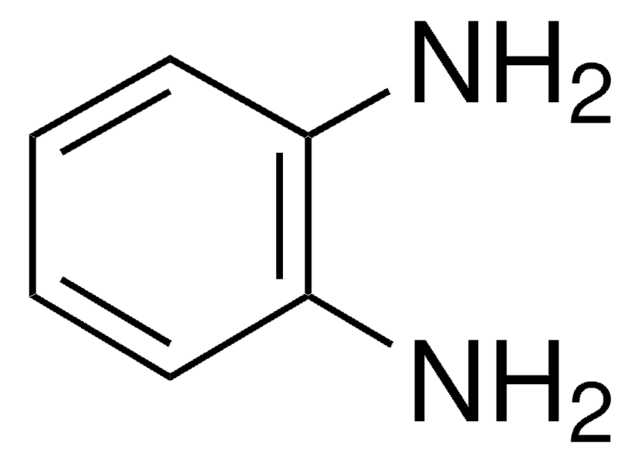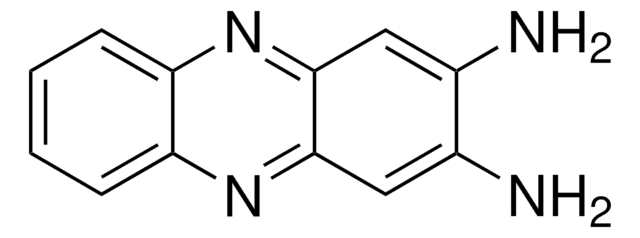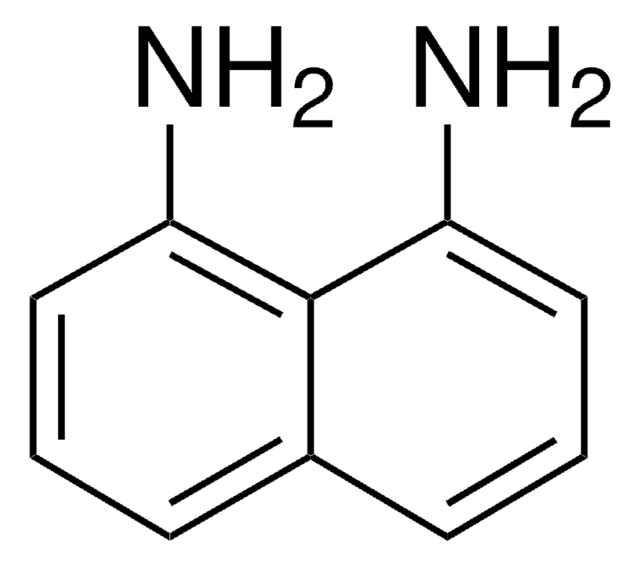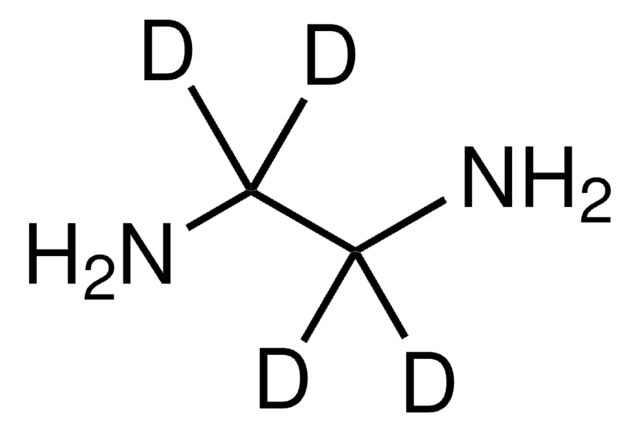E26266
Etilenodiamina
ReagentPlus®, ≥99%
Sinônimo(s):
1,2-Diaminoetano
About This Item
Produtos recomendados
Agency
suitable for EPA 300
Nível de qualidade
densidade de vapor
2.07 (vs air)
pressão de vapor
10 mmHg ( 20 °C)
linha de produto
ReagentPlus®
Ensaio
≥99%
forma
liquid
temperatura de autoignição
716 °F
Lim. expl.
16 %
índice de refração
n20/D 1.4565 (lit.)
pb
118 °C (lit.)
pf
8.5 °C (lit.)
solubilidade
H2O: soluble at
densidade
0.899 g/mL at 25 °C (lit.)
grupo funcional
amine
cadeia de caracteres SMILES
NCCN
InChI
1S/C2H8N2/c3-1-2-4/h1-4H2
chave InChI
PIICEJLVQHRZGT-UHFFFAOYSA-N
Informações sobre genes
human ... FNTA(2339)
Procurando produtos similares? Visita Guia de comparação de produtos
Categorias relacionadas
Descrição geral
Aplicação
DAE can also be used in the following reduction reactions:
- DAE/Borane (1:1) complex is used as a highly selective reducing agent for the conversion of cinnamaldehyde to cinnamyl alcohol.
- DAE/Li complex is used as an efficient reagent for the reduction of alkenes, aromatic hydrocarbons, phenols, and alcohols.
- Synthesis of nucleus pulposus (NP)-like collagen-glycosaminoglycans (CG) core.
- Surface modification of epoxy-activated cryogel.
- Alteration of the surface of carbon nanoparticles (CNPs) to generate CNPs-ethylene.
- Surface modification of triazolate-bridged metal-organic framework.
- As a solvent in the synthesis of ZnS (zinc sulfide) and ZnSe (zinc selenium) precursors by solvothermal process.
- As a reactant in the synthesis of Pd/C-ethylenediamine complex catalyst.
- As a chelating agent in the synthesis of β-Co(OH)2 nanocrystals.
- Synthesis of ethylenediamine-templated iron arsenates and fluoroarsenates.
- As a template agent and coordination agent in the synthesis of CdS (cadmium sulfide) nanocrystals.
Informações legais
Palavra indicadora
Danger
Frases de perigo
Declarações de precaução
Classificações de perigo
Acute Tox. 3 Dermal - Acute Tox. 4 Inhalation - Acute Tox. 4 Oral - Aquatic Chronic 3 - Eye Dam. 1 - Flam. Liq. 3 - Resp. Sens. 1B - Skin Corr. 1B - Skin Sens. 1B
Código de classe de armazenamento
3 - Flammable liquids
Classe de risco de água (WGK)
WGK 1
Ponto de fulgor (°F)
100.4 °F - closed cup
Ponto de fulgor (°C)
38 °C - closed cup
Equipamento de proteção individual
Faceshields, Gloves, Goggles, type ABEK (EN14387) respirator filter
Escolha uma das versões mais recentes:
Já possui este produto?
Encontre a documentação dos produtos que você adquiriu recentemente na biblioteca de documentos.
Os clientes também visualizaram
Artigos
Professor Aran (Claremont University, USA) thoroughly discusses the engineering of graphene based materials through careful functionalization of graphene oxide, a solution processable form of graphene.
Nossa equipe de cientistas tem experiência em todas as áreas de pesquisa, incluindo Life Sciences, ciência de materiais, síntese química, cromatografia, química analítica e muitas outras.
Entre em contato com a assistência técnica












